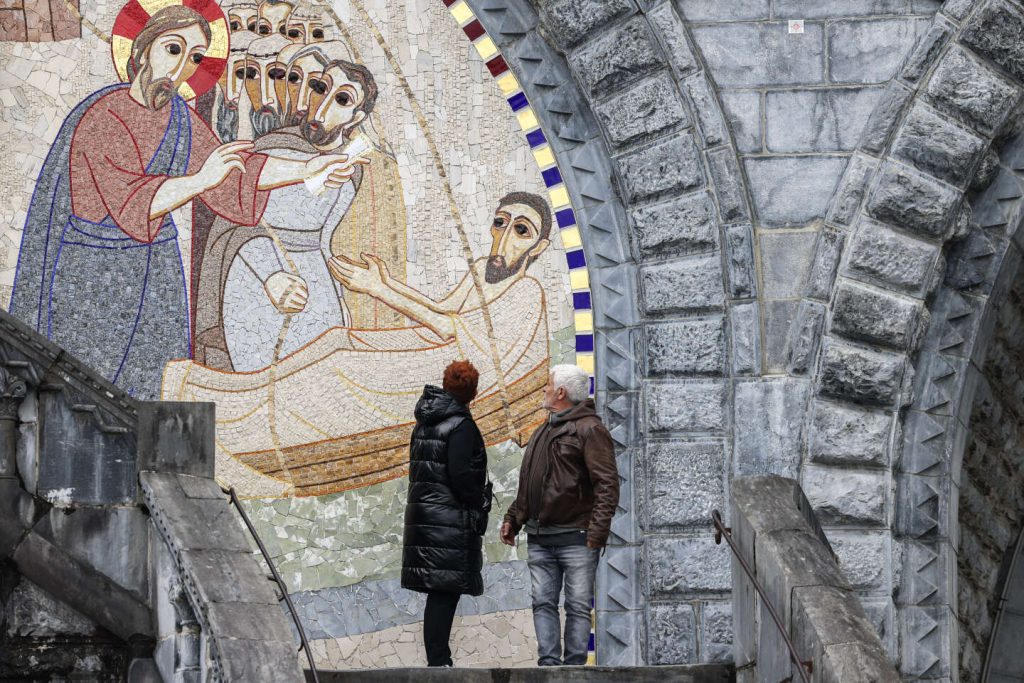The artist and priest Marko Rupnik created mosaics on the façade of the Basilica of Our Lady of the Rosary in Lourdes on March 31, 2023. These mosaics have sparked controversy due to allegations of sexual assault against Rupnik dating back to 1985. Despite this, Rupnik’s work continues to be in high demand, raising questions about whether his decorative pieces should be kept in places of worship. Some believe that they should be removed in respect for the alleged victims, while others argue they should remain based on the presumption of innocence and artistic ownership.
In May, the sanctuary of Our Lady of Aparecida in Brazil will inaugurate the decorated south façade of the basilica, designed by Rupnik. The rector of the complex, Father Eduardo Catalfo, sees this as a cause for celebration and fundraising for the ongoing construction. However, not everyone shares his enthusiasm, as a petition with over five thousand signatures demands the removal of Rupnik’s mosaics. This has prompted ecclesiastical authorities to consider the future of Rupnik’s artwork in churches and religious spaces around the world.
The Bishop of Lourdes, Mgr Jean-Marc Micas, has been grappling with the decision on whether to retain Rupnik’s mosaics on the basilica since allegations against the artist came to light. He has formed a group of priests, psychologists, and victims to advise on the matter. The decision on the fate of the mosaics is expected to be made in the coming months. The consideration reflects a broader debate within the Church regarding how to address allegations of misconduct within the artistic community and the preservation of their work.
The Diocese of Versailles has already made a decision to sever ties with Rupnik in December 2023, following the allegations against him. The decision was made to uphold the dignity of the victims and parishioners, leading to the appointment of a new artist, Augustin Frison-Roche, to create frescoes for a new church. The move underscores the growing importance of accountability and transparency in the Church’s dealings with artists and the need to prioritize the well-being of those who have been harmed.
The case of Marko Rupnik, known as the “Picasso of churches” for his distinctive style, has raised significant ethical and artistic questions for the Church and the wider community. The decision to remove or retain his artwork in religious spaces is a delicate balance of honoring his artistic contributions while acknowledging the harms allegedly caused by him. The ongoing debate highlights the complexities of handling allegations of misconduct within the artistic community and the importance of addressing them with sensitivity and fairness.


